
The Gunung Talagabodas stratovolcano lies immediately north of the more well-known Galunggung volcano. Talagabodas, also spelled Telaga Bodas, is one of the older Quaternary volcanoes in an arcuate N-S trending volcano group east of the city of Garut and is built up of andesitic lavas and pyroclastics. Younger pyroclastics from Gunung Putri-Eweranda overlap the Talagabodas products in the north. The crater of Talagabodas has shifted 1.3 km north from the summit crater of Canar and contains a large sulfur-saturated lake. Fumaroles, mud pots, and a warm spring are found around the lake, which has an elevated temperature. The age of the most recent eruption is not known. Changes in lake color occurred in 1913 and 1921, and expanded solfataric activity was reported in 1927. Another prominent feature of the Telagabodas volcano is the Kawah `Karaha Bodas fumaroles` located 9 km N of the crater-lake, are also part of the geothermal system.
Read more about Telaga bodas at Global Volcanism Program
Karaha Bodas Fumarole Field – March 2019
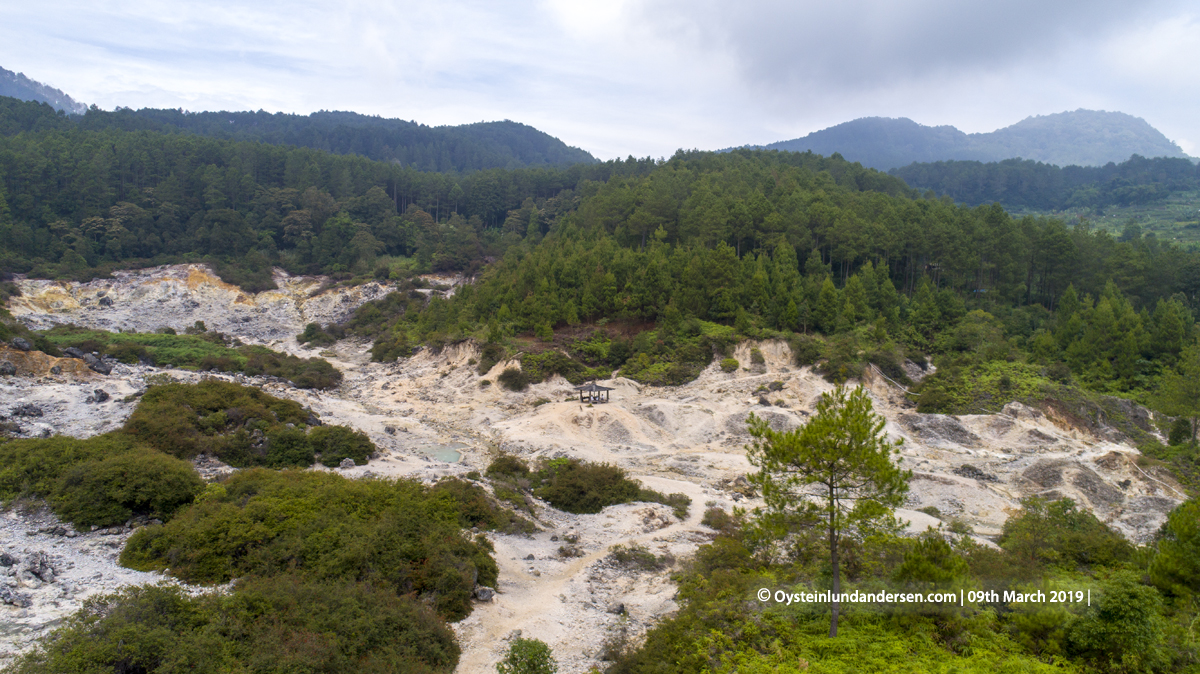

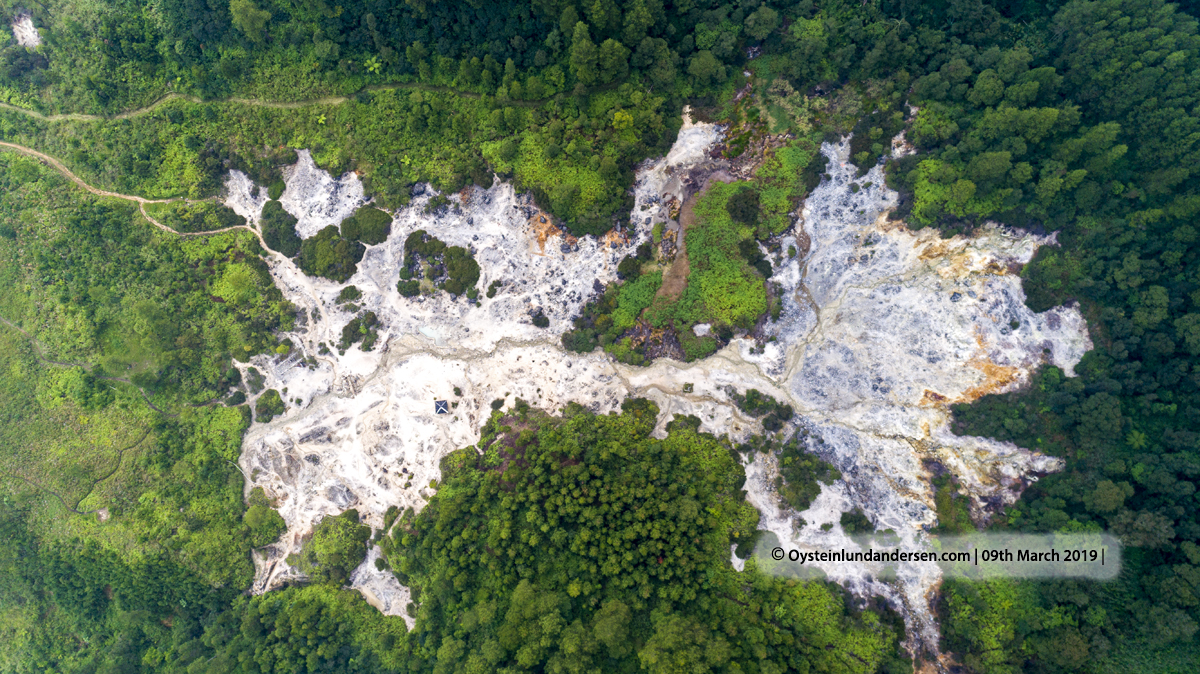
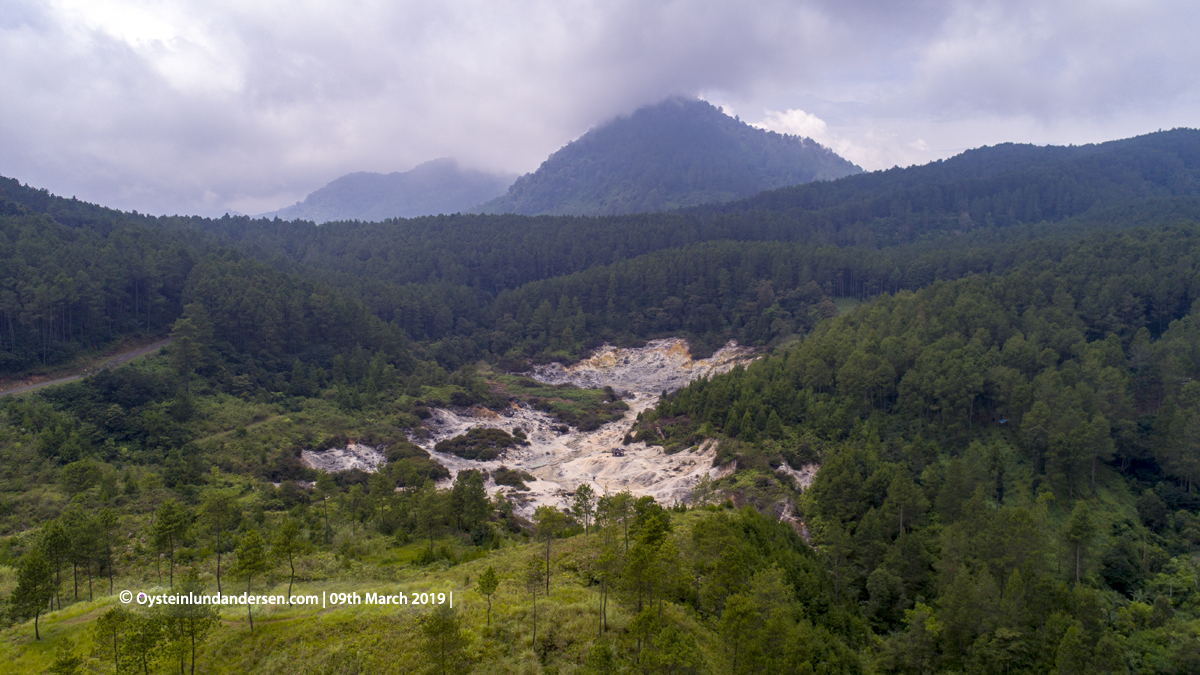

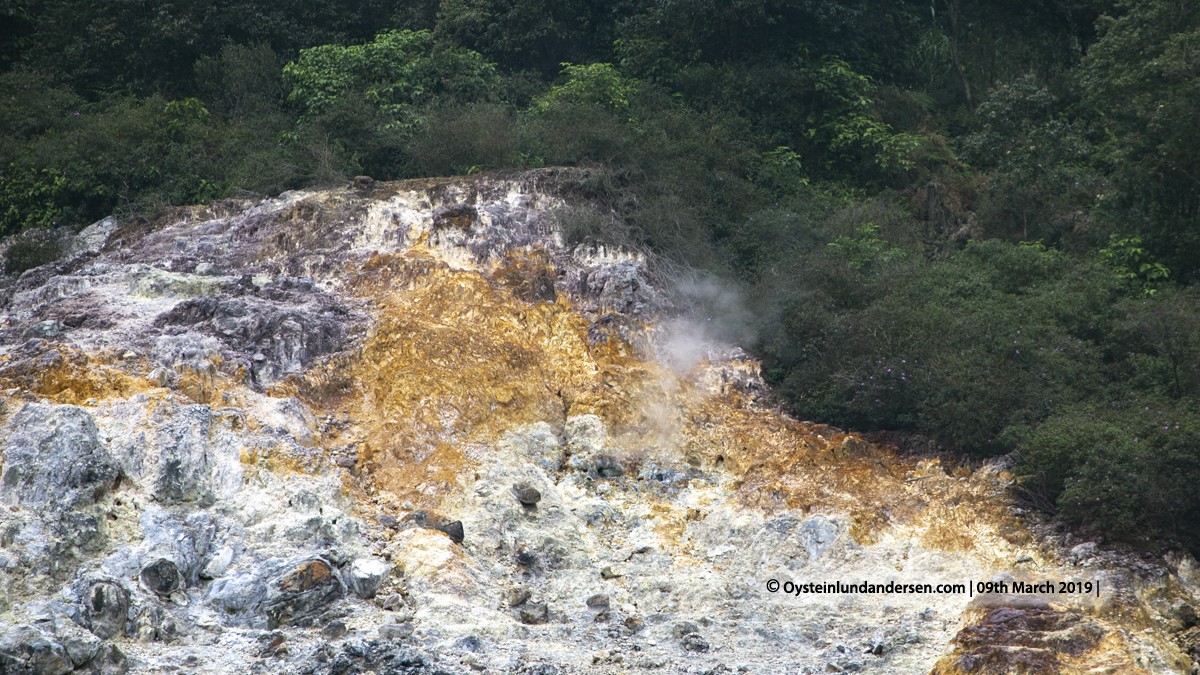
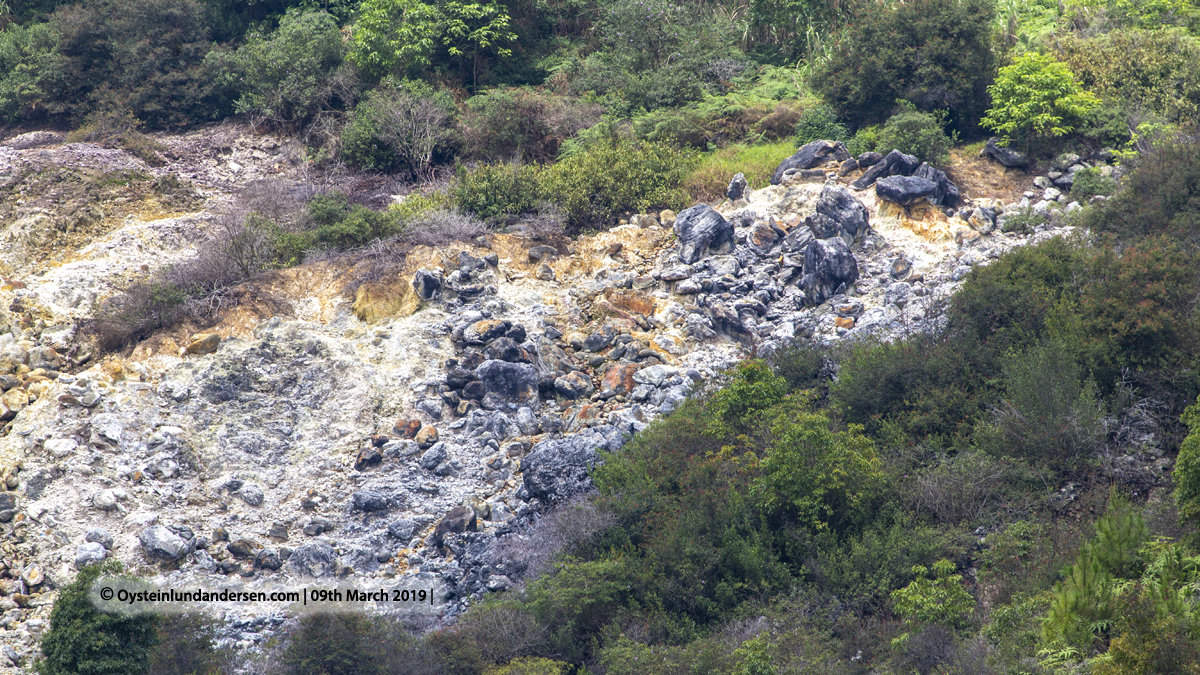



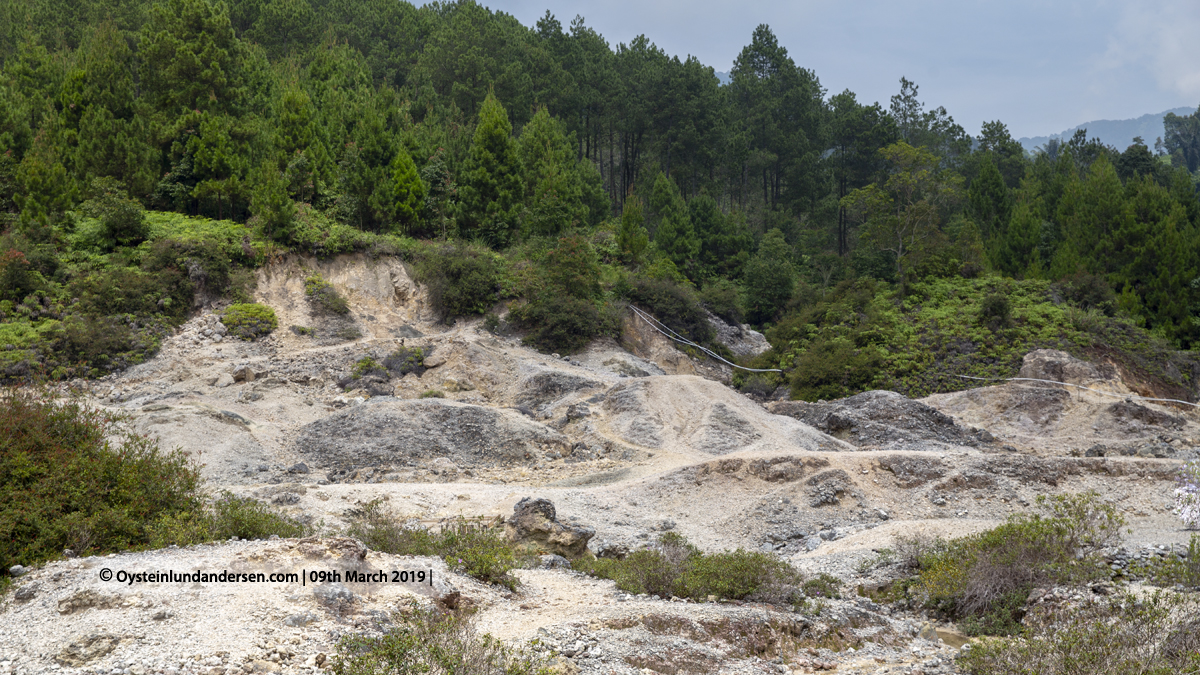




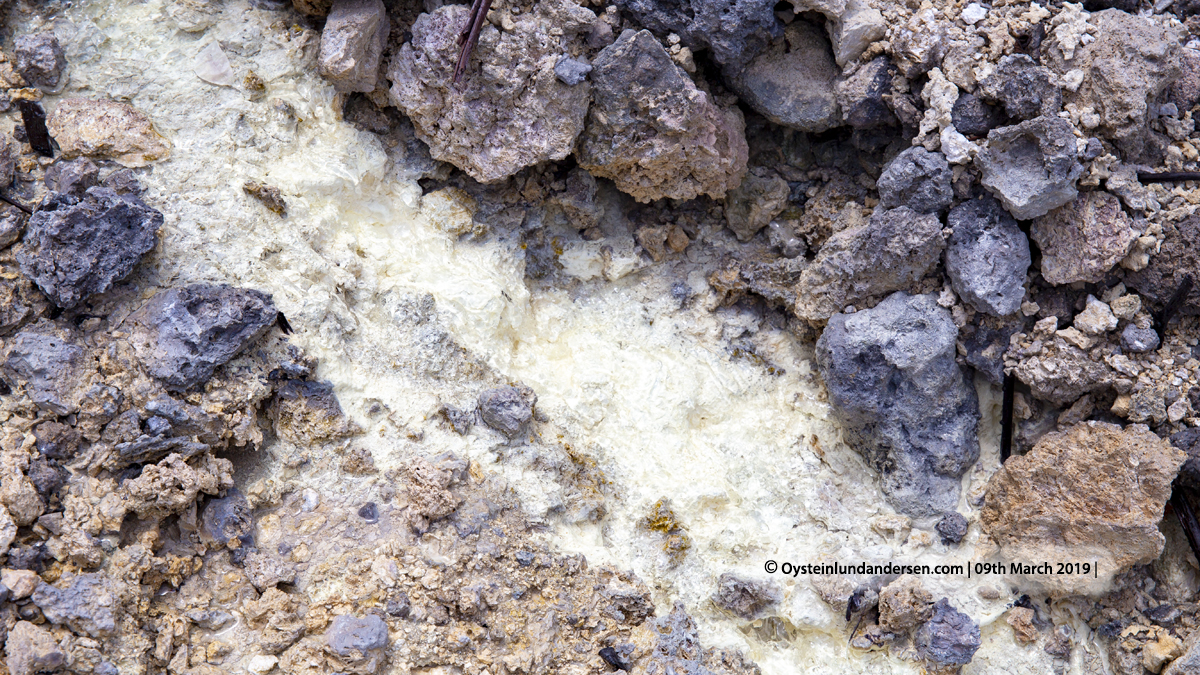
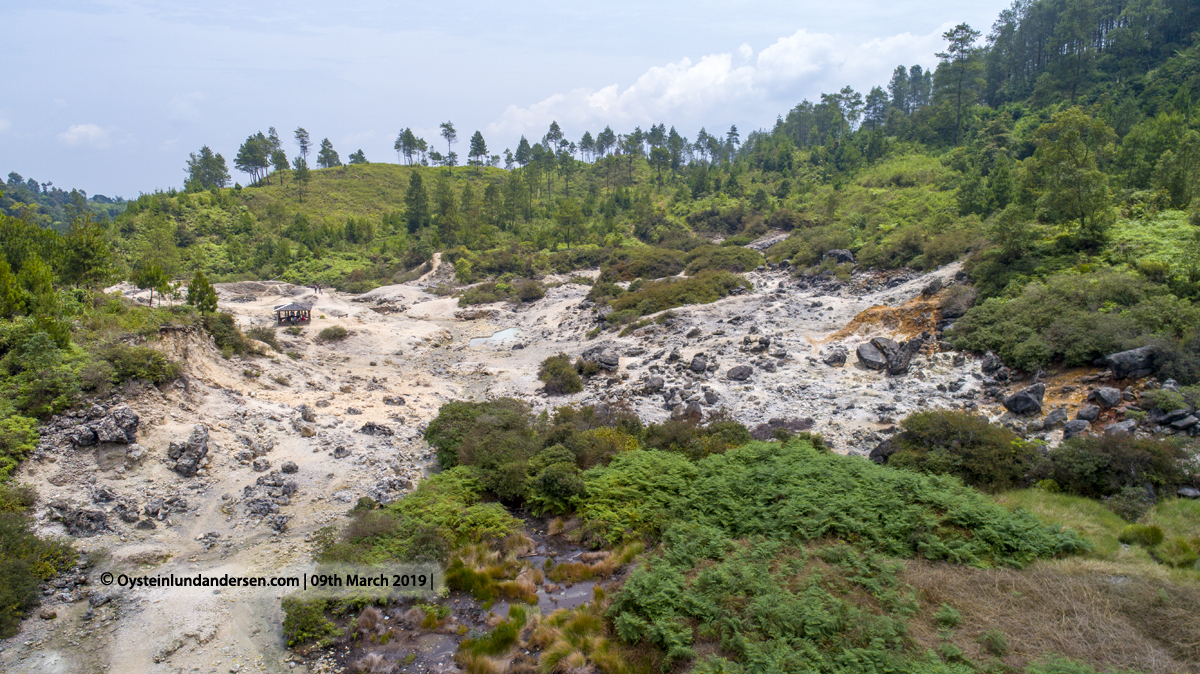

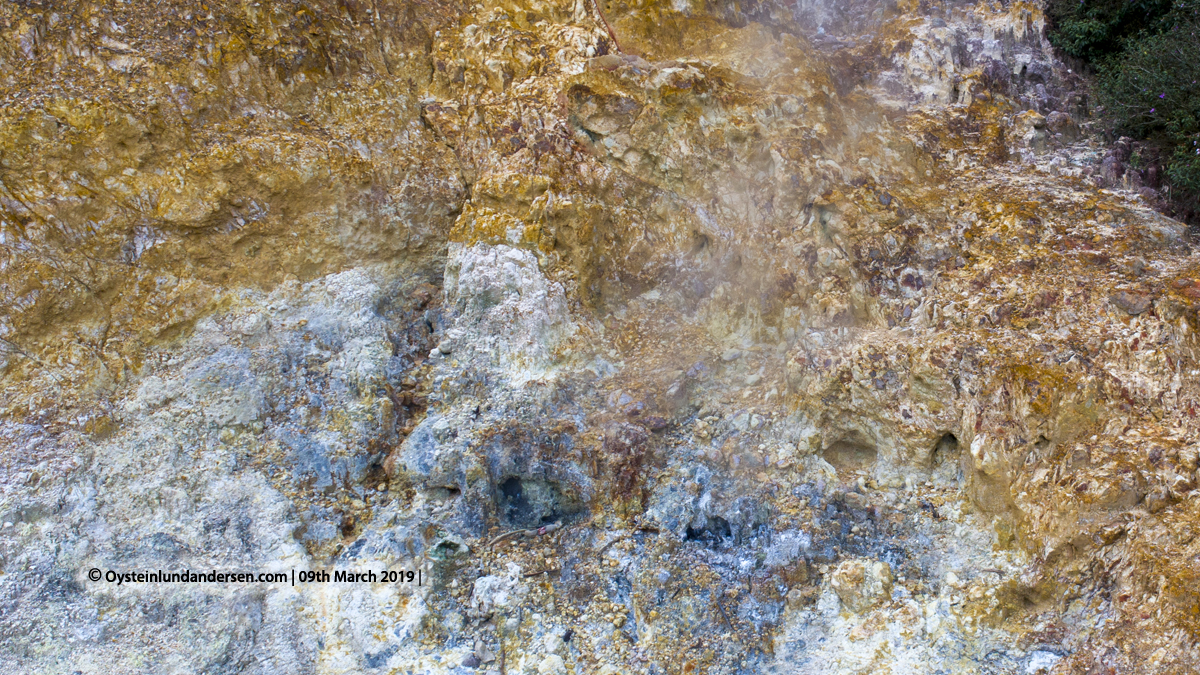
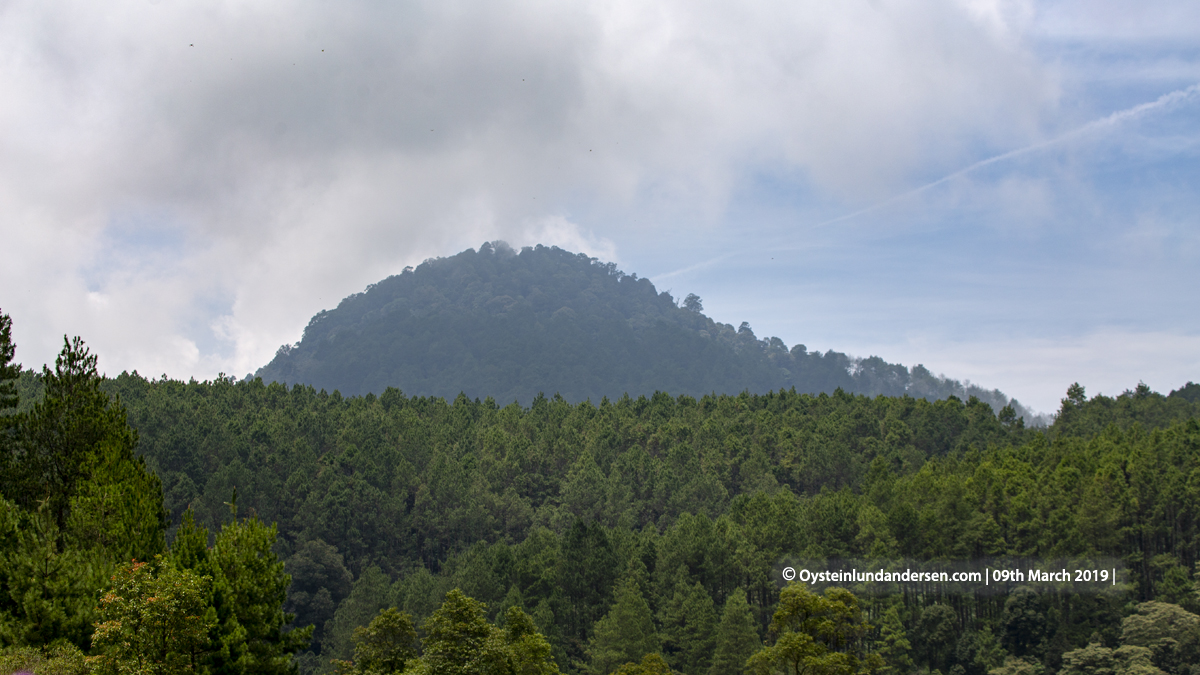
Telaga Bodas Crater-lake – February 2018


